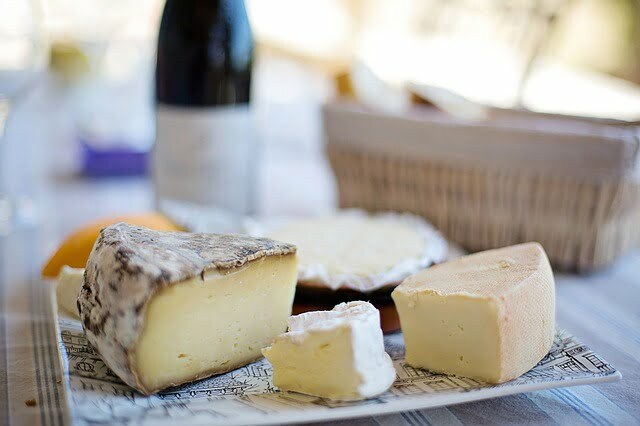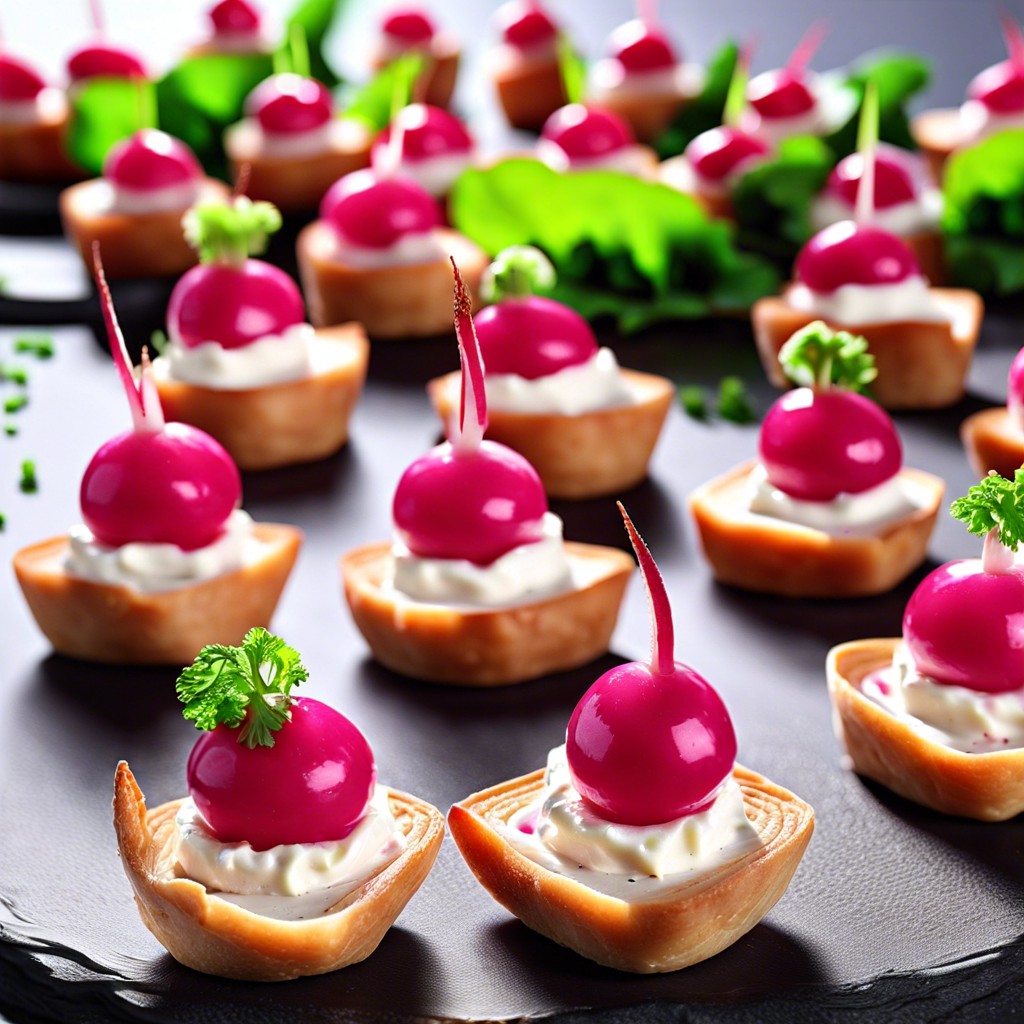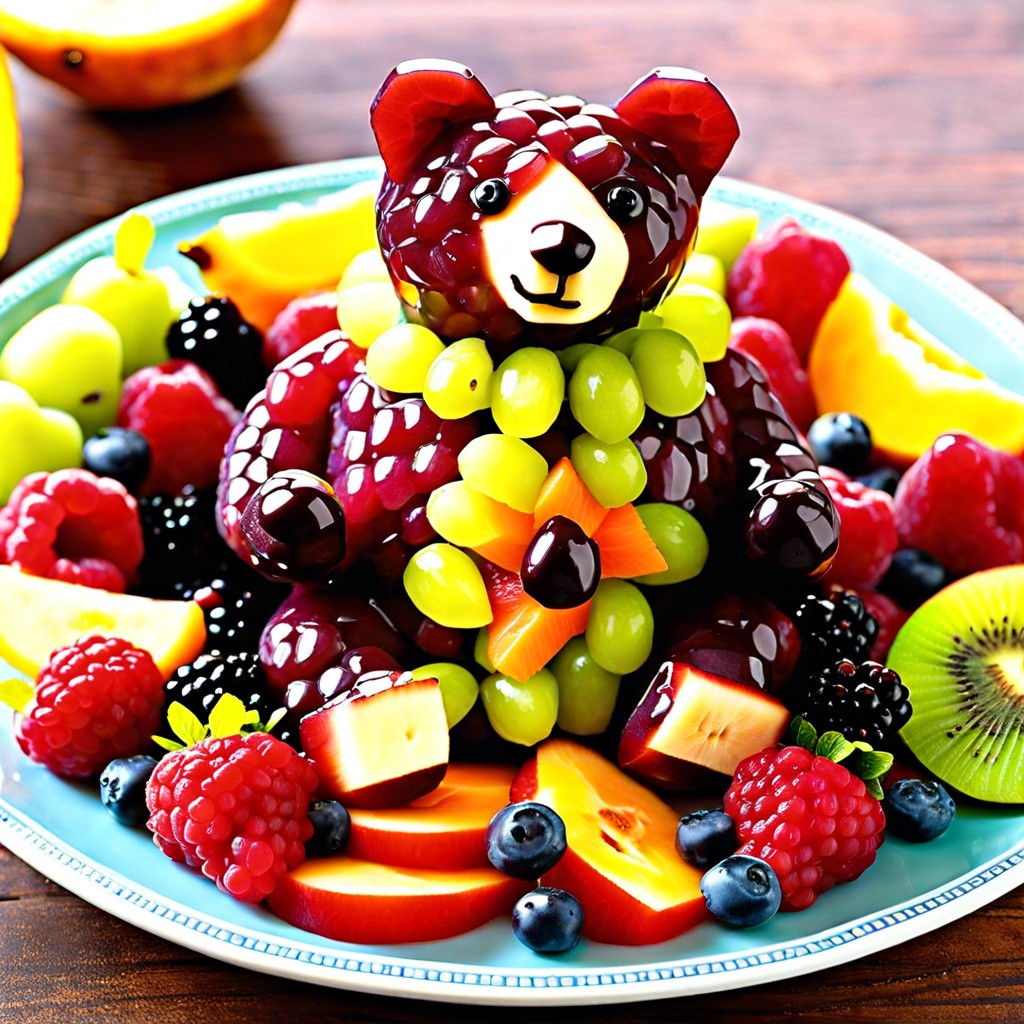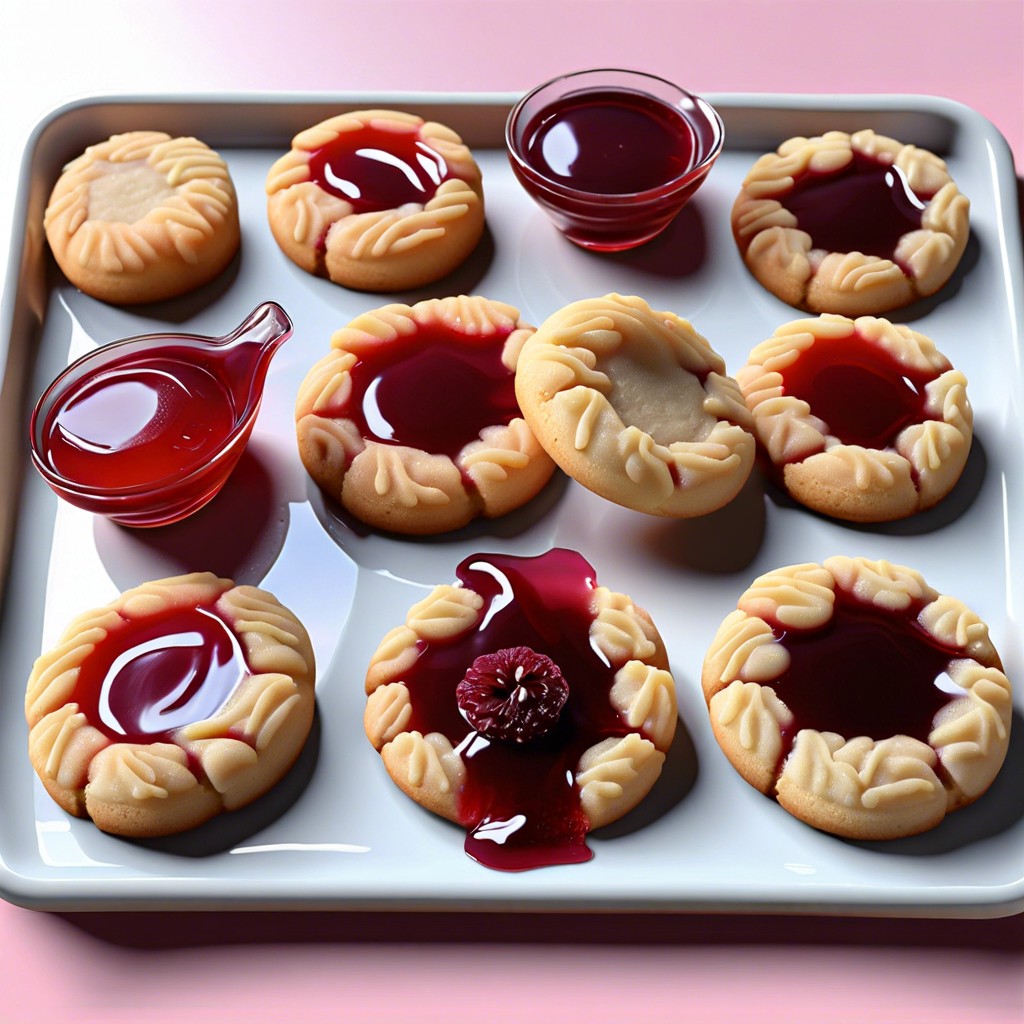Discover the captivating elements that contribute to creating an irresistible appetizer, leaving your taste buds craving for more.
When it comes to dining out or hosting a dinner party, the first impression is crucial. And what better way to make a great first impression than with an irresistible appetizer? But what exactly makes an appetizer visually appealing? Is it the colors, textures, or presentation? In this blog post, we’ll explore the different factors that contribute to the alluring view of an appetizer.
So whether you’re a foodie looking to impress your guests or a restaurant owner aiming for Instagram-worthy dishes, keep reading to learn how to create stunning and delicious appetizers.
Visual Presentation

Visual Presentation: The way an appetizer looks can be just as important as how it tastes. A visually appealing dish can stimulate the appetite and make diners eager to try what’s on their plate.
To create a stunning visual presentation, chefs often use color, texture, and unique plating techniques that showcase the ingredients in an artful way. For example, arranging colorful vegetables in a geometric pattern or using edible flowers to add pops of color are popular ways to elevate the appearance of an appetizer.
But it’s not just about making food look pretty; balance is key when creating a visually appealing dish. Chefs must consider portion size and ensure that all elements on the plate complement each other both aesthetically and flavor-wise.
In addition to being pleasing for diners’ eyes, visual presentation also plays into social media trends where people love sharing photos of beautiful dishes online – so don’t underestimate its importance!
Colorful Ingredients
Bright and vibrant colors not only make a dish visually attractive but also indicate freshness and quality. Incorporating a variety of colorful fruits, vegetables, herbs, or spices can add depth to your dish while providing essential nutrients.
For instance, you can create a rainbow salad with different colored bell peppers or mix up some fresh guacamole with red tomatoes and green cilantro for an eye-catching dip. You could also experiment with using edible flowers like pansies or nasturtiums to add pops of color to your dishes.
However, it’s crucial not to go overboard on colors as too many hues may result in visual clutter that detracts from the overall appeal. Instead, aim for balance by selecting complementary shades that work well together.
Using colorful ingredients is one way to elevate your appetizers’ visual appeal while adding nutritional value at the same time.
Unique Plating Techniques
Unique plating techniques can elevate a dish from ordinary to extraordinary, making it stand out and leaving a lasting impression on your guests. Some popular plating techniques include layering ingredients, using geometric shapes or patterns, creating height with stacked elements or skewers, and incorporating negative space for contrast.
Another trend that has gained popularity recently is the use of edible flowers as garnish to add color and texture to the plate.
When choosing a plating technique for your appetizer, consider how it complements the flavors and textures of your ingredients while also fitting into any cultural or seasonal themes you may be working with. Don’t be afraid to experiment with different styles until you find one that works best for each dish.
Portion Size
A well-proportioned dish can make it look more appetizing and inviting, while an oversized or undersized portion can be off-putting to the eye. The ideal portion size for an appetizer should be small enough to leave room for the main course but large enough to satisfy your guests’ hunger pangs.
It’s important to consider the number of people you’re serving and adjust your portions accordingly.
When creating visually appealing appetizers, keep in mind that less is often more when it comes to portion sizes. Small bites are easier on the eyes and allow guests to try multiple dishes without feeling overwhelmed or full before their main course arrives.
Aroma and Fragrance
The scent can evoke memories, stimulate the appetite, and enhance the overall dining experience. A well-crafted appetizer should have a pleasant fragrance that complements its flavor profile.
For example, if you’re serving a seafood-based dish, adding fresh herbs like dill or parsley can help balance out any fishy odors while enhancing the natural flavors of your ingredients.
Using aromatic spices like cumin or cinnamon in your recipe can add depth to your dish’s fragrance profile while also providing health benefits such as aiding digestion or reducing inflammation.
When it comes to fragrances in food presentation, less is often more; overpowering scents may be off-putting for some diners. Therefore it’s essential to strike a delicate balance between aromas without overwhelming guests’ senses with too many competing smells.
Ingredient Quality
Using fresh, high-quality ingredients can make a significant difference in both taste and appearance. When selecting your ingredients, consider their color, texture, and flavor profile.
For example, using vibrant green herbs or colorful vegetables can add a pop of color to your dish while also providing essential nutrients.
Moreover, choosing locally sourced or organic produce not only supports local farmers but also ensures that you’re serving food free from harmful chemicals and pesticides. Opting for premium cuts of meat or seafood will enhance the overall flavor profile while adding an element of luxury to your dish.
Textures Balance
A well-balanced texture can elevate a dish from ordinary to extraordinary, making it more enjoyable and satisfying for the palate. The combination of crunchy, creamy, chewy or crispy textures creates a harmonious contrast that adds depth and complexity to any dish.
For instance, pairing crispy fried wontons with smooth avocado cream or topping creamy hummus with toasted pine nuts provides an exciting textural experience for your taste buds. Similarly, adding some crunchiness by sprinkling sesame seeds on top of soft tuna tartare can create a delightful sensation in every bite.
When creating appetizers at home or in restaurants always consider balancing different textures while keeping in mind the flavor profile you want to achieve.
Garnish Selection
It’s a small detail, but it can make a big difference in the overall presentation and taste of your dish. When selecting garnishes for your appetizers, consider using fresh herbs like parsley or cilantro to add color and flavor.
Edible flowers such as pansies or nasturtiums are also popular choices that add visual appeal.
Another option is to use fruits like berries or citrus slices as a colorful accent on savory dishes. For example, adding sliced strawberries on top of goat cheese crostini creates an eye-catching contrast between sweet and tangy flavors.
When choosing garnishes, keep in mind the flavor profile of your dish so that it complements rather than overpowers it. Also, consider any dietary restrictions or allergies among guests when selecting ingredients for your garnish.
Cultural Inspiration
Different cultures have their unique ingredients, cooking techniques, and plating styles that make their dishes stand out. Incorporating cultural elements into your appetizers can add depth and interest to your menu while also showcasing different culinary traditions.
For example, if you’re looking for inspiration from Japanese cuisine, you might consider using fresh seafood like tuna or salmon sashimi as a base for your dish. You could then add traditional Japanese flavors like soy sauce or wasabi to enhance the taste profile further.
Similarly, Mediterranean-inspired appetizers often feature bright colors and bold flavors such as olives, feta cheese with herbs like oregano or thyme sprinkled on top of them.
Dietary Accommodations
With the rise of food allergies and intolerances, accommodating different dietary needs has become a crucial aspect of menu planning. Whether you’re catering for vegans, vegetarians or gluten-free guests, there are plenty of options available that can cater to their specific requirements without compromising on taste or presentation.
For instance, if you have vegan guests attending your dinner party or restaurant patrons with dairy allergies ordering from your menu; hummus served with fresh vegetables is an excellent option as it is both vegan and dairy-free. Similarly, grilled portobello mushrooms stuffed with quinoa salad make for a delicious gluten-free appetizer that everyone will enjoy.
Seasonal Ingredients
Not only do seasonal ingredients taste better because they are harvested at their peak ripeness, but they also add an element of excitement to your menu as customers look forward to trying new dishes each season. For example, during the summer months you can incorporate juicy watermelon or sweet corn into your appetizers while in the fall you can use pumpkin or squash for a warm and comforting flavor profile.
By using seasonal ingredients in your appetizer recipes, you’ll not only create visually appealing dishes but also provide unique flavors that will keep customers coming back for more.
Flavor Pairings
When selecting ingredients, it’s important to consider how they complement each other. Some classic flavor pairings include sweet and salty, sour and spicy, and umami with just about anything.
However, don’t be afraid to experiment with unexpected combinations like savory bacon paired with sweet figs or tangy goat cheese topped on a bed of bitter arugula leaves.
When creating your appetizer menu for a dinner party or restaurant setting, think about the overall theme you want to convey through your dishes. For example, if you’re going for an Italian-inspired menu featuring pasta dishes as entrees then incorporating traditional Italian ingredients such as basil pesto sauce paired with sun-dried tomatoes would be fitting.
Cooking Techniques
Different cooking techniques can create unique textures, colors, and flavors that make the dish more visually appealing. For example, grilling or roasting vegetables brings out their natural sweetness and adds a smoky flavor to the dish.
On the other hand, frying creates a crispy texture that contrasts well with soft ingredients like cheese or avocado.
Moreover, using different cooking methods for each ingredient in an appetizer can add depth to its presentation while keeping it simple yet elegant. For instance, you could grill shrimp skewers while sautéing mushrooms on the side for a colorful and flavorful combination.
Cooking techniques are essential when creating visually appealing appetizers as they bring out unique flavors and textures in each ingredient used in your recipe.
Menu Theme Consistency
A well-thought-out theme can elevate the dining experience and make your restaurant stand out from the competition. Whether you’re going for a rustic Italian vibe or a modern fusion twist, ensure that your appetizers align with your overall concept.
For example, if you’re running an Asian-inspired restaurant, consider incorporating traditional ingredients such as soy sauce or sesame oil into your dishes. You could also play around with presentation techniques like using bamboo skewers or serving in small bamboo baskets to enhance the authenticity of each dish.
On the other hand, if you have a more casual pub-style establishment that serves classic American fare like burgers and fries but still want to offer some exciting appetizers on the menu – think about how they can complement each other while maintaining consistency within this style of cuisine.
Creativity and Innovation
Chefs who think outside the box and experiment with unique ingredients, textures, colors, and plating techniques can create dishes that not only look stunning but also taste amazing. By incorporating unexpected flavors or using unconventional cooking methods, chefs can surprise their guests with a memorable culinary experience.
Innovation in appetizer creation is not limited to just the food itself; it extends to the presentation as well. For example, some restaurants serve their appetizers on unconventional serveware such as mini frying pans or wooden boards instead of traditional plates.
This adds an element of novelty that enhances the overall dining experience.
Moreover, creativity in designing an appetizer menu is equally important for restaurant owners looking to stand out from competitors. Offering unique flavor combinations or cultural-inspired dishes can attract customers seeking something different from typical fare.
The Role of Appetizers in a Meal
They set the tone for the meal, giving diners an idea of what’s to come and creating anticipation for more delicious dishes. Appetizers can also help balance out a meal by providing contrasting flavors and textures that complement each other.
Appetizers can be used as a way to showcase culinary creativity and innovation. Chefs often use appetizer courses as an opportunity to experiment with new ingredients or cooking techniques before incorporating them into main dishes.
Moreover, appetizers provide social benefits during meals shared with friends or family members. They encourage conversation while everyone enjoys small bites together before moving on to their individual entrees.
Pairing Appetizers With Drinks
Whether it’s a glass of wine, beer, or cocktail, the pairing can enhance both the flavor and experience of your dish. When selecting drinks to pair with your appetizers, consider factors such as acidity levels and alcohol content.
For example, if you’re serving an acidic dish like ceviche or bruschetta topped with tomatoes and balsamic vinegar dressing; try pairing it up with a crisp white wine that has high acidity levels like Sauvignon Blanc or Pinot Grigio. On the other hand, if you’re serving something rich in flavors like bacon-wrapped dates stuffed with goat cheese; opt for full-bodied red wines such as Cabernet Sauvignon.
If cocktails are more your style than wine or beer; experiment by creating unique combinations that complement each other well. For instance: spicy margaritas go great alongside guacamole while gin-based cocktails work wonders when served alongside seafood dishes.
Visually Appealing Appetizer Ideas
From colorful vegetable skewers to bite-sized sushi rolls, there are countless ways to make your appetizer stand out. One popular trend is incorporating edible flowers into the dish for a pop of color and elegance.
Another idea is using unique serving vessels such as mini cast iron skillets or shot glasses for a creative twist on traditional dishes.
Another way to create an eye-catching appetizer is by playing with textures and shapes. For example, you can serve crispy wonton chips alongside creamy guacamole or arrange sliced meats in an intricate pattern on a charcuterie board.
Don’t be afraid to get creative with your ingredients either! Consider using unexpected items like fruit salsa or flavored hummus as dips for vegetables or pita chips.
Appropriate Serveware Choices
The right dish or platter can elevate the presentation of even the simplest appetizer, while an inappropriate one may detract from its overall appearance. When selecting serveware, consider the size and shape of your appetizer and how it will fit on each plate or platter.
For example, if you’re serving bite-sized hors d’oeuvres like meatballs or stuffed mushrooms, small plates with raised edges are ideal to prevent them from rolling off. For larger items like bruschetta or crostini that require spreading toppings over bread slices, long rectangular platters work well to showcase their length.
Consider using unique materials such as slate boards for cheese plates or wooden bowls for dips to add texture and interest to your presentation. Remember that appropriate serveware choices not only enhance the visual appeal but also contribute significantly towards creating a memorable dining experience for guests.
Seasonal and Cultural Influences
Depending on the season, certain ingredients may be more readily available or preferred by diners. For example, during summer months, light and refreshing appetizers featuring seasonal fruits like watermelon or berries are popular choices.
In contrast, heartier options with warm spices like cinnamon and nutmeg are favored during fall and winter.
Cultural influences also impact the types of ingredients used in appetizer dishes. For instance, Mediterranean-inspired cuisine often features hummus dips paired with pita bread or fresh vegetables for dipping while Asian-inspired cuisine may include spring rolls filled with savory meats or vegetables.
By incorporating seasonal and cultural elements into your appetizer creations, you can add unique flavors that will impress your guests’ palates while also showcasing your culinary skills as a chef. So whether it’s using locally sourced produce from nearby farms to create farm-to-table inspired dishes or drawing inspiration from global cuisines to create fusion-style bites – let these factors guide you towards creating visually appealing yet deliciously satisfying appetizers that leave an unforgettable impression on those who indulge in them!
FAQ
What makes appetizers appealing to the eyes?
Appetizers become visually appealing through a variety of textures, such as smooth, rough, lumpy, soft, and crisp, which create a contrast that draws the eye and enhances the overall taste experience.
How can you present appetizers in an attractive appealing way?
To present appetizers in an attractive, appealing way, place each appetizer on its own plate and arrange these plates on a large serving platter in a circular or uniform pattern, ensuring equal distance between each dish.
Why is it important for appetizers to have visual appeal?
Visual appeal in appetizers is important because people psychologically associate taste with appearance, influencing their perception of the dish’s flavor.
In what ways can color and texture combinations enhance the overall visual appeal of appetizers?
Color and texture combinations can enhance the overall visual appeal of appetizers by creating an aesthetically pleasing presentation, stimulating diners’ visual senses, and encouraging them to enjoy the culinary experience.
How do serving utensils and dishware play a role in the presentation of appetizers?
Serving utensils and dishware enhance the presentation of appetizers by providing an attractive and functional display that complements the visual appeal and convenience of the dishes.
Are there any cultural or regional variations that influence the visual appeal of appetizers in different cuisines?
Yes, cultural and regional variations greatly influence the visual appeal of appetizers in different cuisines, as people from diverse backgrounds often prefer distinct presentation styles and colors that reflect their tastes and traditions.




